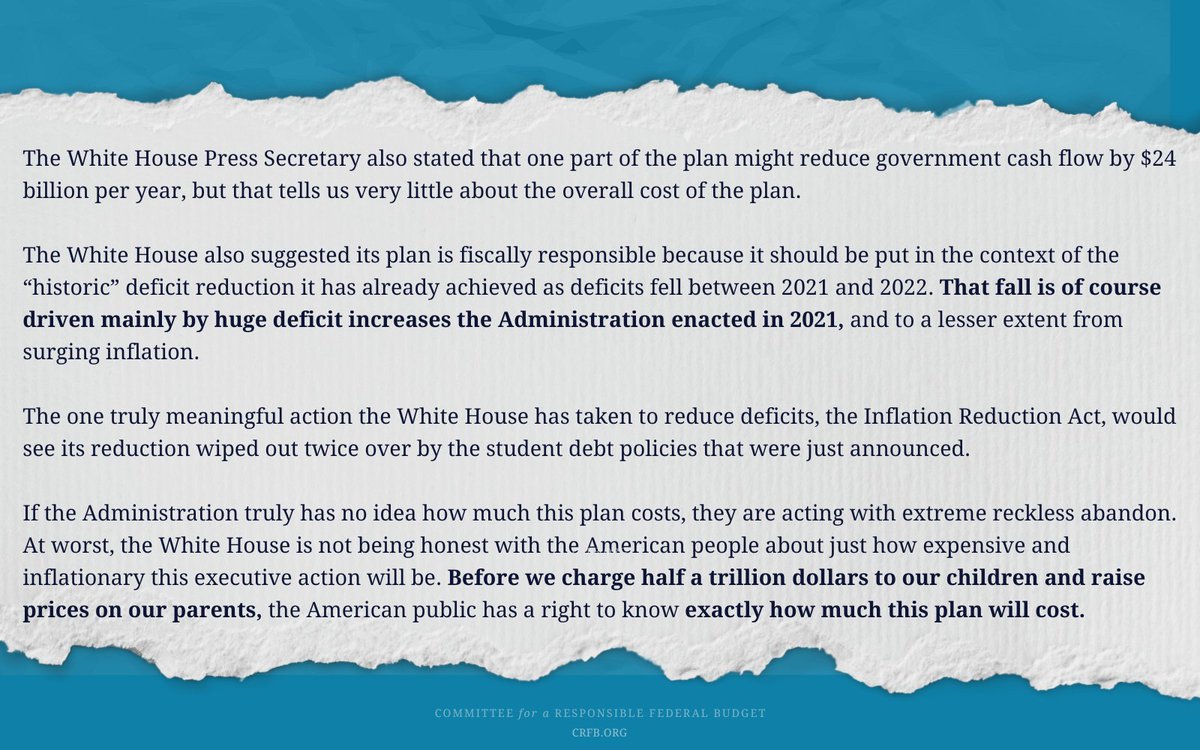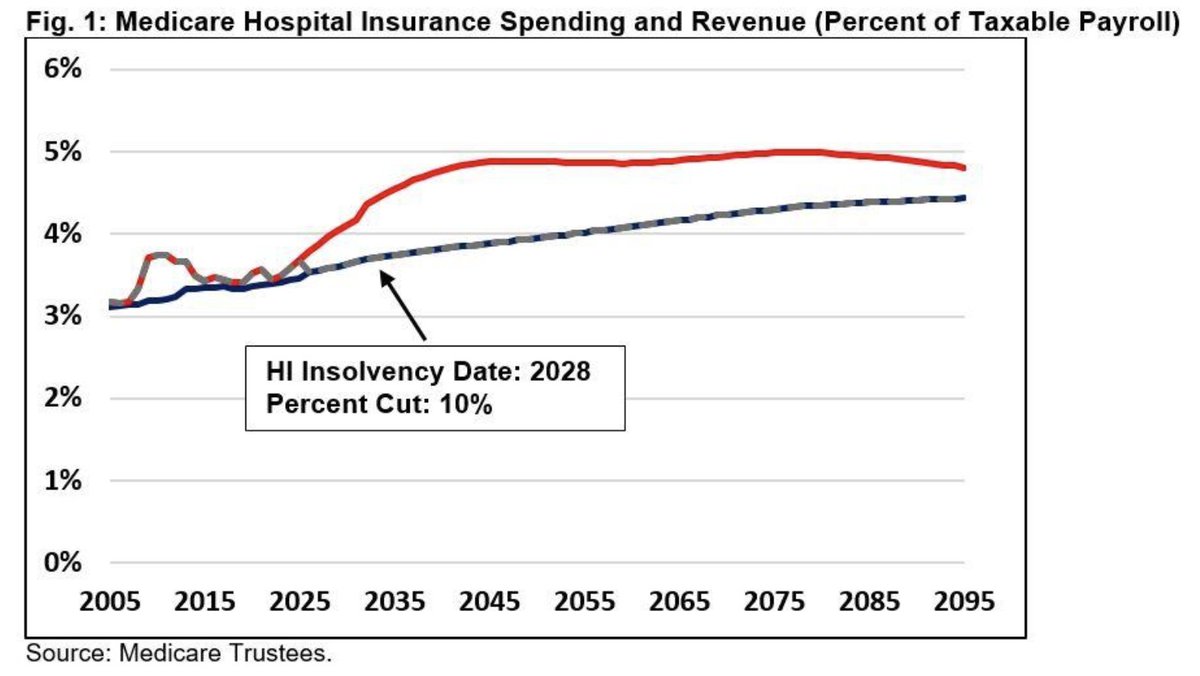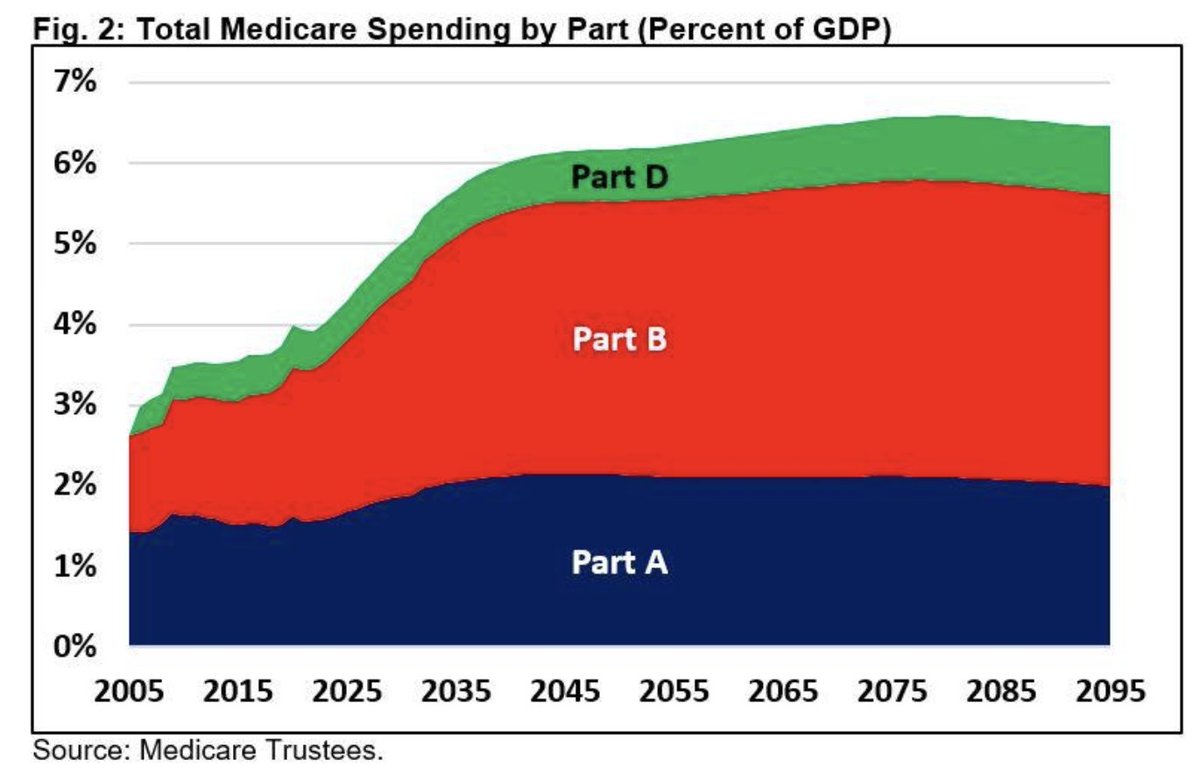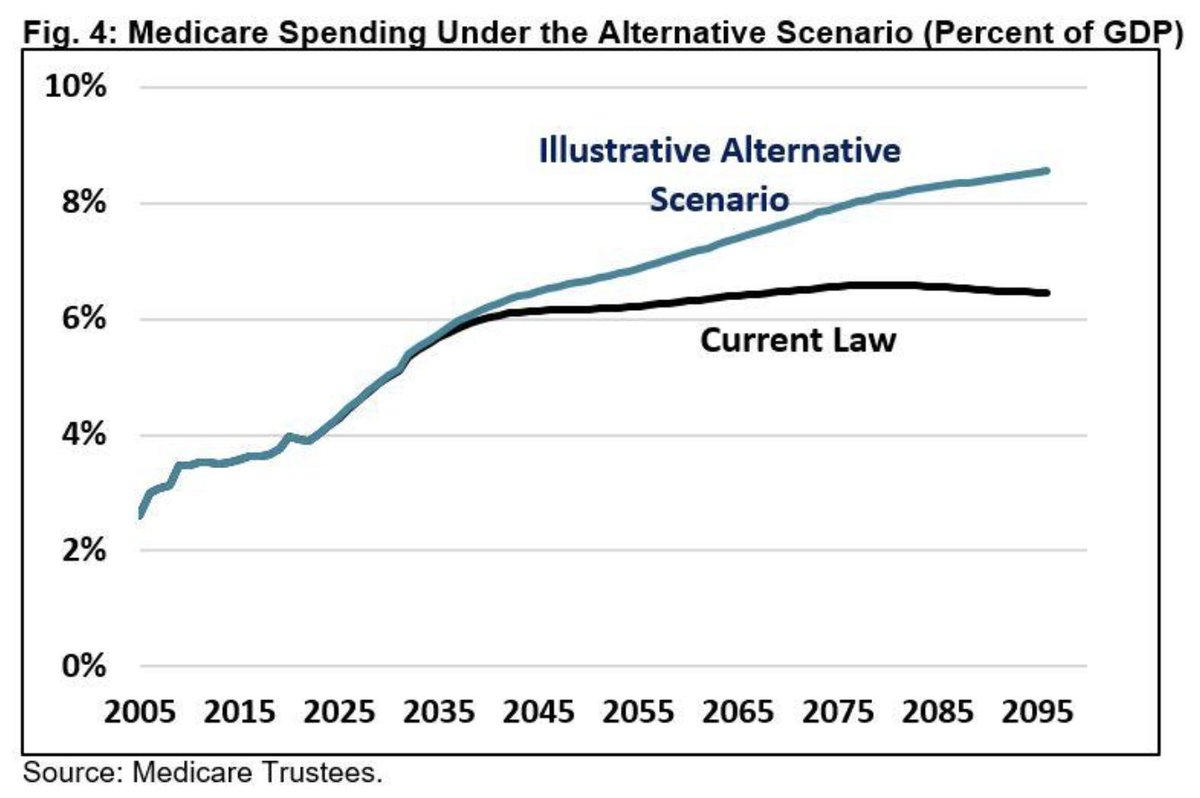
🚨NEW: @POTUS today announced student loan changes – including cancellation of up to $20k for some borrowers – that will cost $440–$600 billion over the next ten years.
That brings the total cost of pandemic-era student loan actions to ~$800 billion.
➡️crfb.org/blogs/new-stud….
That brings the total cost of pandemic-era student loan actions to ~$800 billion.
➡️crfb.org/blogs/new-stud….

Today’s announcement consisted of:
➡️Broad student debt cancellation (cost: ~$𝟯𝟲𝟬 𝗯𝗶𝗹𝗹𝗶𝗼𝗻); ➡️Changes to income-driven repayment plans (cost: ~$𝟭𝟮𝟬 𝗯𝗶𝗹𝗹𝗶𝗼𝗻);
➡️Final student loan repayments extension (cost: ~$𝟮𝟬 𝗯𝗶𝗹𝗹𝗶𝗼𝗻)
Read more on each in our blog.
➡️Broad student debt cancellation (cost: ~$𝟯𝟲𝟬 𝗯𝗶𝗹𝗹𝗶𝗼𝗻); ➡️Changes to income-driven repayment plans (cost: ~$𝟭𝟮𝟬 𝗯𝗶𝗹𝗹𝗶𝗼𝗻);
➡️Final student loan repayments extension (cost: ~$𝟮𝟬 𝗯𝗶𝗹𝗹𝗶𝗼𝗻)
Read more on each in our blog.
💰We estimate that cancellation will eliminate $550 billion of federal student loan debt.
📈However, we project that the overall amount of outstanding federal student loan debt will return to $1.6 trillion (its current level) within 𝗳𝗶𝘃𝗲 𝘆𝗲𝗮𝗿𝘀.
📈However, we project that the overall amount of outstanding federal student loan debt will return to $1.6 trillion (its current level) within 𝗳𝗶𝘃𝗲 𝘆𝗲𝗮𝗿𝘀.

Moreover, the changes announced today will likely cost more than 𝗱𝗼𝘂𝗯𝗹𝗲 the amount saved through the recently passed #InflationReductionAct, 𝗰𝗼𝗺𝗽𝗹𝗲𝘁𝗲𝗹𝘆 𝗲𝗹𝗶𝗺𝗶𝗻𝗮𝘁𝗶𝗻𝗴 any disinflationary benefit from the bill...
...and the proposed loan changes do nothing to reduce the amount of borrowing moving forward, setting up a future administration to be called on to cancel debt again.
It is extremely troubling to see the Administration reverse the legislative progress made on deficit reduction.
Now more than ever, policymakers need to enact changes that reduce deficits and put the #nationaldebt on a downward sustainable path.
More: crfb.org/blogs/new-stud….
Now more than ever, policymakers need to enact changes that reduce deficits and put the #nationaldebt on a downward sustainable path.
More: crfb.org/blogs/new-stud….
• • •
Missing some Tweet in this thread? You can try to
force a refresh






















